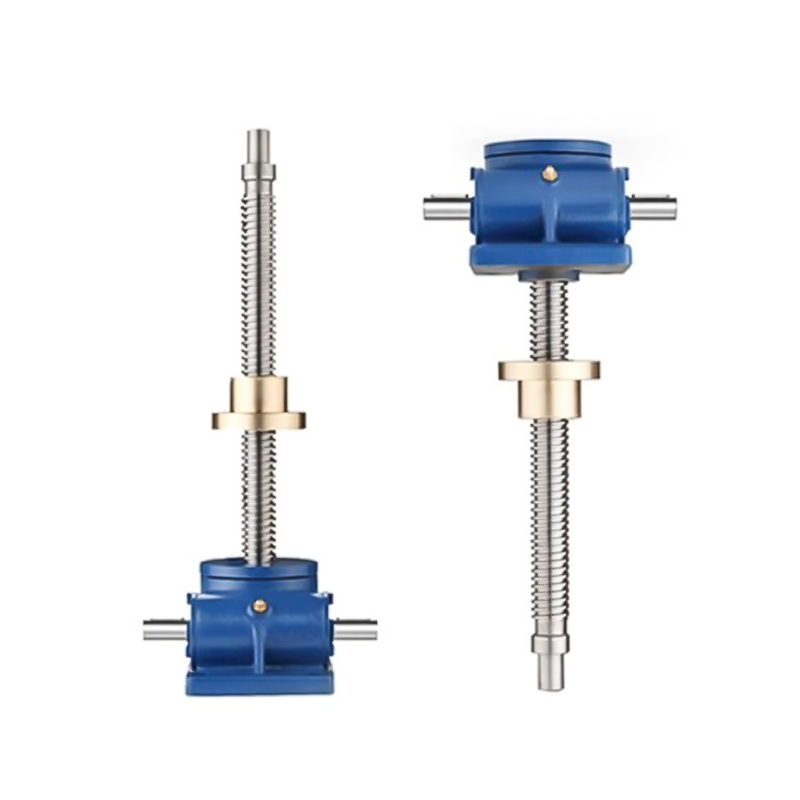Lifting screws, often referred to as lead screws or ball screws in some contexts, are integral to industrial lifting systems, providing a reliable and precise method of lifting, positioning, and moving heavy loads. These components are critical in sectors like construction, manufacturing, and warehouse automation, where accurate and safe lifting is essential. But how do lifting screws enhance the efficiency and safety of industrial lifting systems, and what advantages do they offer over other types of lifting mechanisms?
One of the primary ways in which lifting screws contribute to efficiency is through their mechanical advantage. Lifting screws work on the principle of converting rotational motion into linear motion, which allows for smooth, controlled lifting of heavy loads. When paired with a motor or manual drive system, the rotation of the screw translates into a vertical or horizontal motion that can lift substantial weights with relatively low input force. This mechanical advantage allows for precise control over the lifting process, which is particularly important in environments where exact positioning of the load is required.
Lifting screws are designed to provide a high degree of accuracy, which is crucial for industrial applications that require precise load movement. For example, in the aerospace or automotive manufacturing sectors, where precision is non-negotiable, lifting screws are used to lift and position components with tight tolerances. The fine threads and thread profiles of these screws enable them to achieve fine adjustments, making them ideal for use in systems where small, incremental movements are required. This precision enhances the overall efficiency of the lifting system, reducing the need for additional adjustments or recalibration.
In addition to improving efficiency, lifting screws are key to ensuring the safety of industrial lifting systems. When properly designed and maintained, they can offer secure, stable load handling, which reduces the risk of accidents caused by load instability or failure. The mechanical nature of lifting screws, especially when equipped with features like anti-backlash mechanisms, helps ensure that the load is securely held in place during lifting, preventing unexpected movements or drops. This is particularly important in heavy-duty applications where failure of the lifting system could lead to catastrophic consequences.

The material selection for lifting screws is also an essential factor in their performance and safety. Materials such as stainless steel or alloy steel are often chosen for their strength, resistance to wear, and ability to withstand high mechanical loads. These materials help ensure that the lifting screw can perform its function reliably over time without failure or excessive wear. Additionally, surface treatments like coating or galvanizing help protect the screw from corrosion, which is especially important in outdoor or harsh industrial environments. By extending the lifespan of the screw and reducing the need for maintenance, these materials contribute to the long-term safety and efficiency of the lifting system.
Another factor that enhances safety is the ability of lifting screws to incorporate braking systems or locking mechanisms. In applications where load security is crucial, such as in construction sites or heavy machinery, a locking mechanism ensures that the screw remains in place when not in operation, preventing accidental movement or descent of the load. These mechanisms provide an added layer of safety, especially when lifting heavy or dangerous materials.
Lifting screws are also beneficial in terms of energy efficiency. Compared to hydraulic or pneumatic systems, which can require significant amounts of energy to operate, lifting screws are often more energy-efficient. They provide a high degree of mechanical efficiency, with minimal energy loss in the form of friction. This efficiency reduces the energy consumption of the lifting system and can lead to lower operational costs, making them an attractive option for businesses seeking to reduce energy usage while maintaining reliable load handling.
The versatility of lifting screws is another contributing factor to their efficiency. These screws can be used in various lifting configurations, from vertical to horizontal lifts, and can be integrated into a wide range of mechanical systems. Whether used in a simple manual screw jack or a complex motorized lift system, lifting screws offer flexible solutions for different industrial needs, further enhancing the overall efficiency of the operation.


 English
English 中文简体
中文简体 Español
Español русский
русский عربى
عربى







